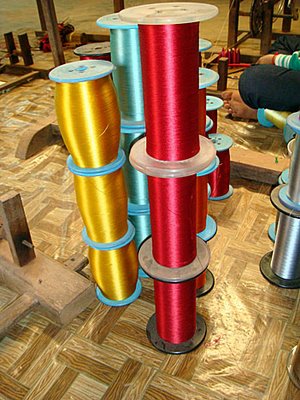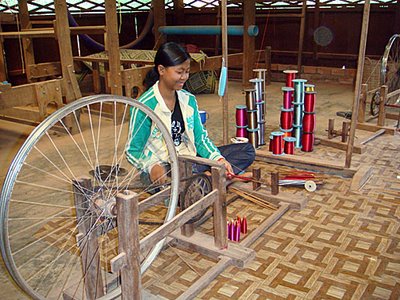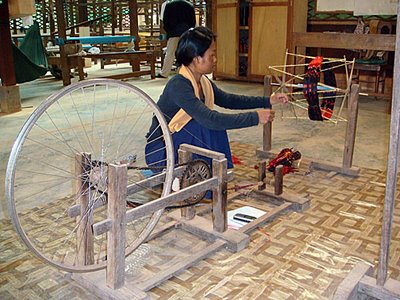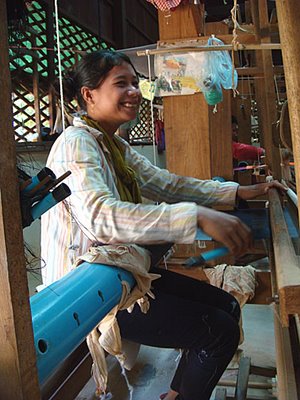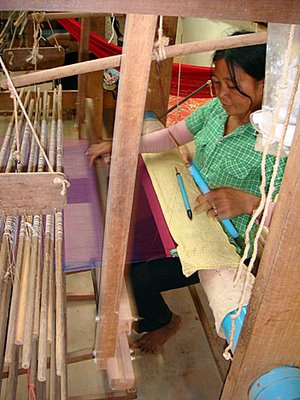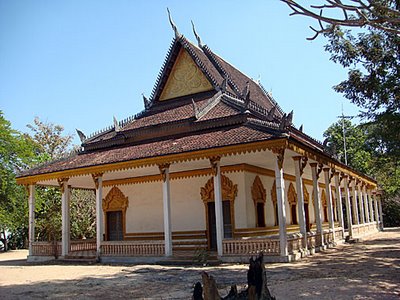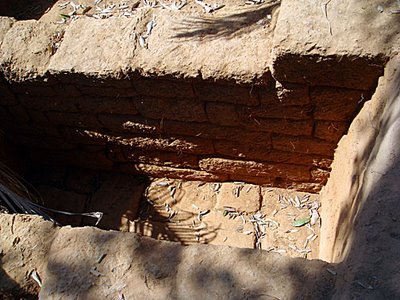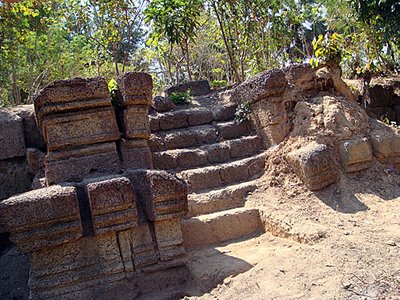The weave of history
On a recent trip to Siem Reap, I took a ride out to Pradak village, sometimes called Preah Dak, now a flourishing community with lots of houses selling rattan souvenirs and palm sugar, but a decade ago, a very poor village which you missed in the blink of an eye on the road to Banteay Srei. It's noticeable as you pass by each house, how many of them have a well and water-pump donated by a well-wisher from the States or England nowadays. I headed for Wat Pradak where the local weaving co-operative have set up a weaving center in the grounds of the pagoda and provide high quality silk kramas, sampots and accessories to the Artisans d'Angkor retail outlets in Siem Reap. They were more than happy to let me wander around taking photos and asking questions but they had nothing for sale on the premises as all of their output goes to their retail partners. The girls at the weaving looms were a happy bunch and smiles and a few pros sa-aat's later and I was on my way. Next stop was a relic of the Angkorean period, 9th century to be precise, when much of the village would've been underwater as part of the now-dry East Baray and Krol Romeas was a type of sluice gate that was used to regulate the flow of water in and out of the baray, and into the Roluos River. Today its just a series of laterite walls and foundations where the locals grow herbs and vegetables, though it was obvious some survey and excavation work had recently taken place to determine its correct use. It's also fancifully called a rhinoceros pit and measures 40 by 100 metres. This is where I heard a trio of kick-boxers practicing their art in a clump of trees nearby.
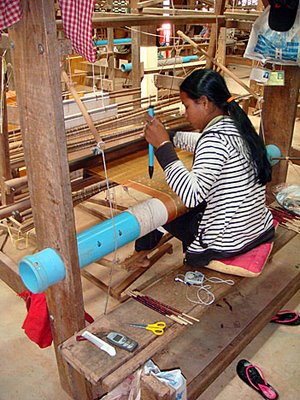 Weaving a sampot with the tools of the trade on her bench, including her prize possession, her mobile phone
Weaving a sampot with the tools of the trade on her bench, including her prize possession, her mobile phone
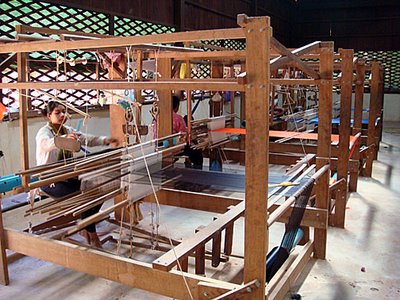 I counted at least sixteen weaving looms in the co-operative's building in the grounds of Wat Pradak
I counted at least sixteen weaving looms in the co-operative's building in the grounds of Wat Pradak
 Weaving a sampot with the tools of the trade on her bench, including her prize possession, her mobile phone
Weaving a sampot with the tools of the trade on her bench, including her prize possession, her mobile phone I counted at least sixteen weaving looms in the co-operative's building in the grounds of Wat Pradak
I counted at least sixteen weaving looms in the co-operative's building in the grounds of Wat PradakLabels: Krol Romeas, Pradak
